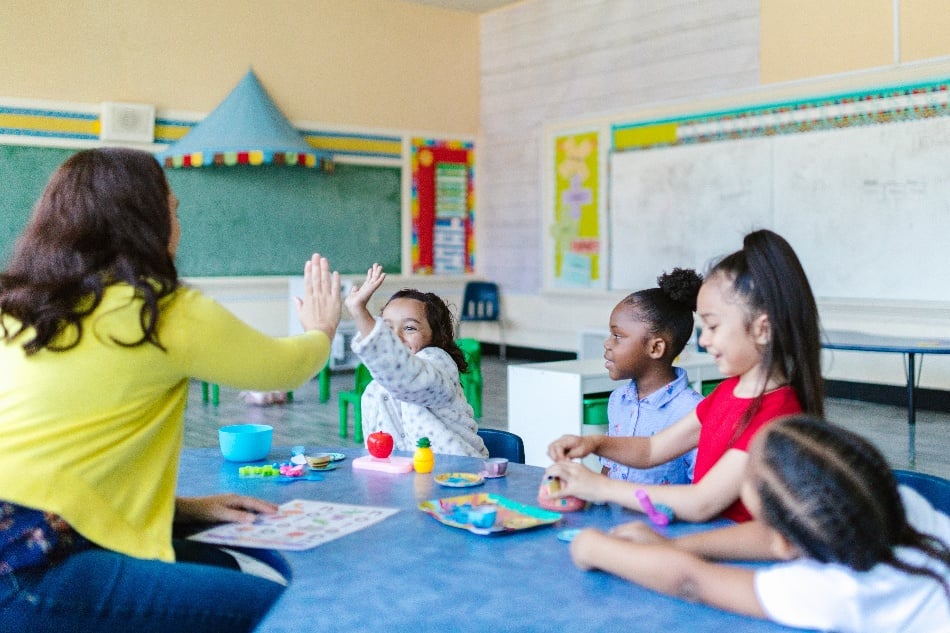When it comes to introducing identity to students, it can be an awkward and sensitive topic to discuss if the appropriate steps aren't taken beforehand. There needs to be a safe and welcoming space to discuss and collaborate. There also needs to be a conversation about respecting other cultures, backgrounds, languages, etc. that are different from yours. I want all of my students to be able to express their unique identities with confidence and certainty, and I do not want anyone to feel embarrassed, nervous, or unsure of sharing who they are and where they came from. I also want my students to know that everyone is included in my classroom even though we are all different.
A picture book that can help introduce these ideas is titled, The Town of Turtle, by Michelle Cuevas. This book is about a turtle who feels lonely and decides to decorate his shell to feel more at home. This leads to him building an entire town with a pond, a school, houses, and parks. After all his hard work, he falls asleep. Turtle awakes to all kinds of different individuals moving to the town he created, and eventually, he has made lots of new friends in his new home. This book is a great introduction to identity because it begins by describing the feeling of being lonely and in a place that may not feel like home. This is a feeling a lot of students may have, especially if they are transferring from a different school, do not speak English fluently, are having trouble making friends, or are just feeling shy. One thing I like about this book is that it introduces multiple different identities of the individuals who move to the turtle's town. It emphasizes the diverse community of individuals that love the turtle's town and want to be friends with him, which is something a lot of students may enjoy reading about. This helps bring a feeling of warmth and comfort to those who may be exhibiting the same emotions as the turtle at the beginning of the book, and they can realize that they can make friends with people who may look or act differently than them.

To elaborate on the ideas in this book, there are a couple of instructional activities students can complete to feel more connected with themselves and their peers. For example, you can have students complete a Where I Am From Poem which is a template of sentence stems and/or questions that ask students about their identities. These can include, special foods you like to eat with your family, ways you like to spend your time, important events in your life, smells or sounds in the places you grew up, street names you remember, and many more. This is a great way to have students think about their own identities in detail because it helps them develop an appreciation for where they came from. It also helps nurture positive social identities while inviting students to express their pride in a safe space.
Another activity students can complete is a Social Identity Wheel which is a worksheet that students can fill out and then use to share with others in a class discussion. This worksheet allows students to number off categories of identity based on a rubric that includes, identities you think about the most often, least often, identities you want to learn more about, identities that have the strongest effect on how you perceive yourself, and how you perceive others. Once they have filled out their wheel, they can group up with other students who had similar rankings as they did which helps direct discussions based on different perspectives of identity. This activity is great because it helps describe students’ membership in multiple identity groups when they may have not even realized how similar they were to their peers.

The basis of a safe, inclusive, and respectful classroom comes from these principles, and without them, there is a higher risk of stereotype threats and deficit thinking. According to Howard in Why race and culture matter in Schools, “the ramifications of the racial stigma continue to influence students today, not only regarding opportunities provided, but also in terms of psychological well-being,” (Howard 32). Race and culture are important concepts to discuss in classrooms for this very reason. I do not want my students to be negatively affected by the stigma of race and the false generalizations of themselves and their peers. Being able to generate thoughtful and personal class discussions can help prevent these issues from arising in the classroom. Many thoughts and assumptions can be made about a child’s culture, race, or even language, although they are simply “stereotypes of epic proportions,” (Valencia 92). Educators have a specific duty of ensuring every single student feels welcome and valued in their classroom, and that is why stereotypes and assumptions must be discussed at the beginning of the school year, so students do not have to feel like the lonely turtle all year long.

Posted on July 13, 2023 at 11:10 p.m.
References
https://assets2.hrc.org/welcoming-schools/documents/WS_Lesson_Where_Im_From_Poetry.pdf
https://sites.lsa.umich.edu/inclusive-teaching/social-identity-wheel/
Howard, T.C. (2010) Why race and culture matter in schools
Valencia, R.R. & Black, M. (2002). “Mexican Americans don’t value education! On the basis of the myth, mythmaking, and debunking.
Links to an external site.” Journal of Latinos and Education, 1(2), 81-103.

No comments:
Post a Comment